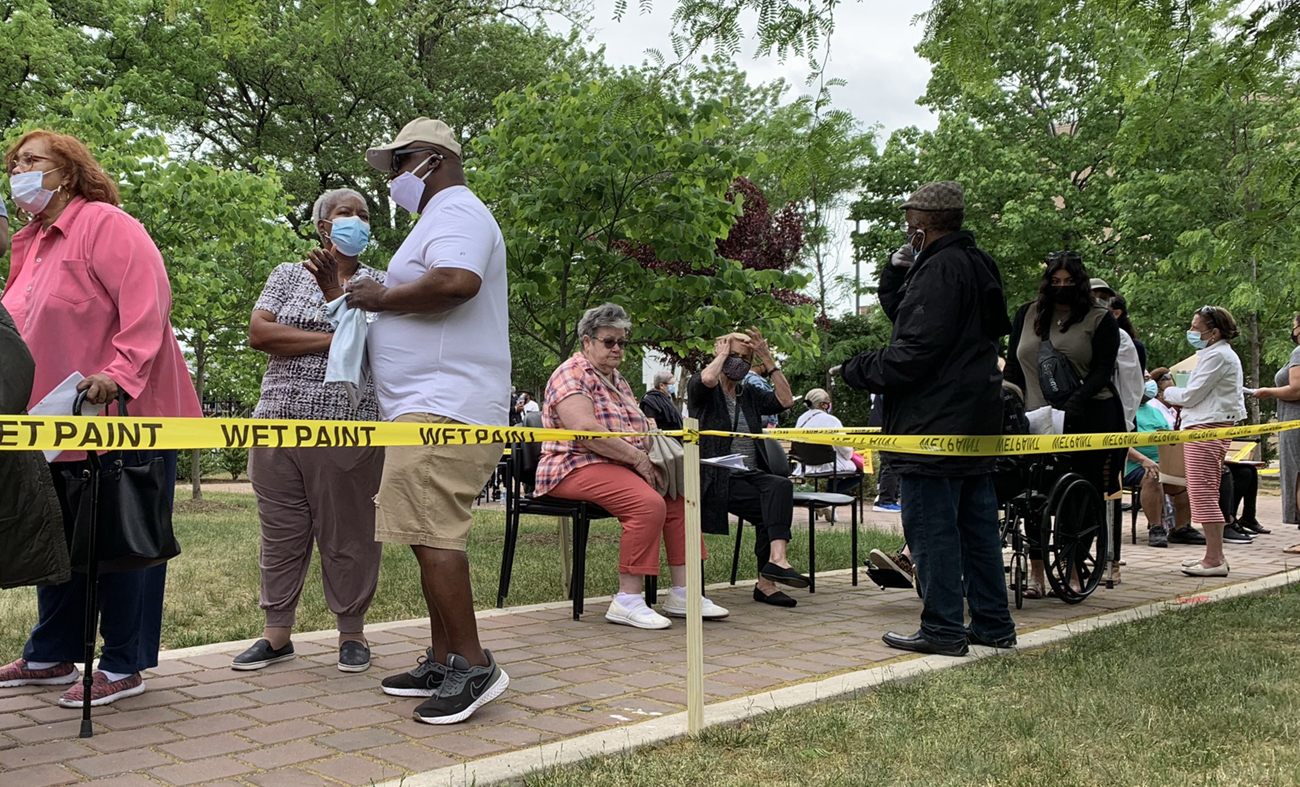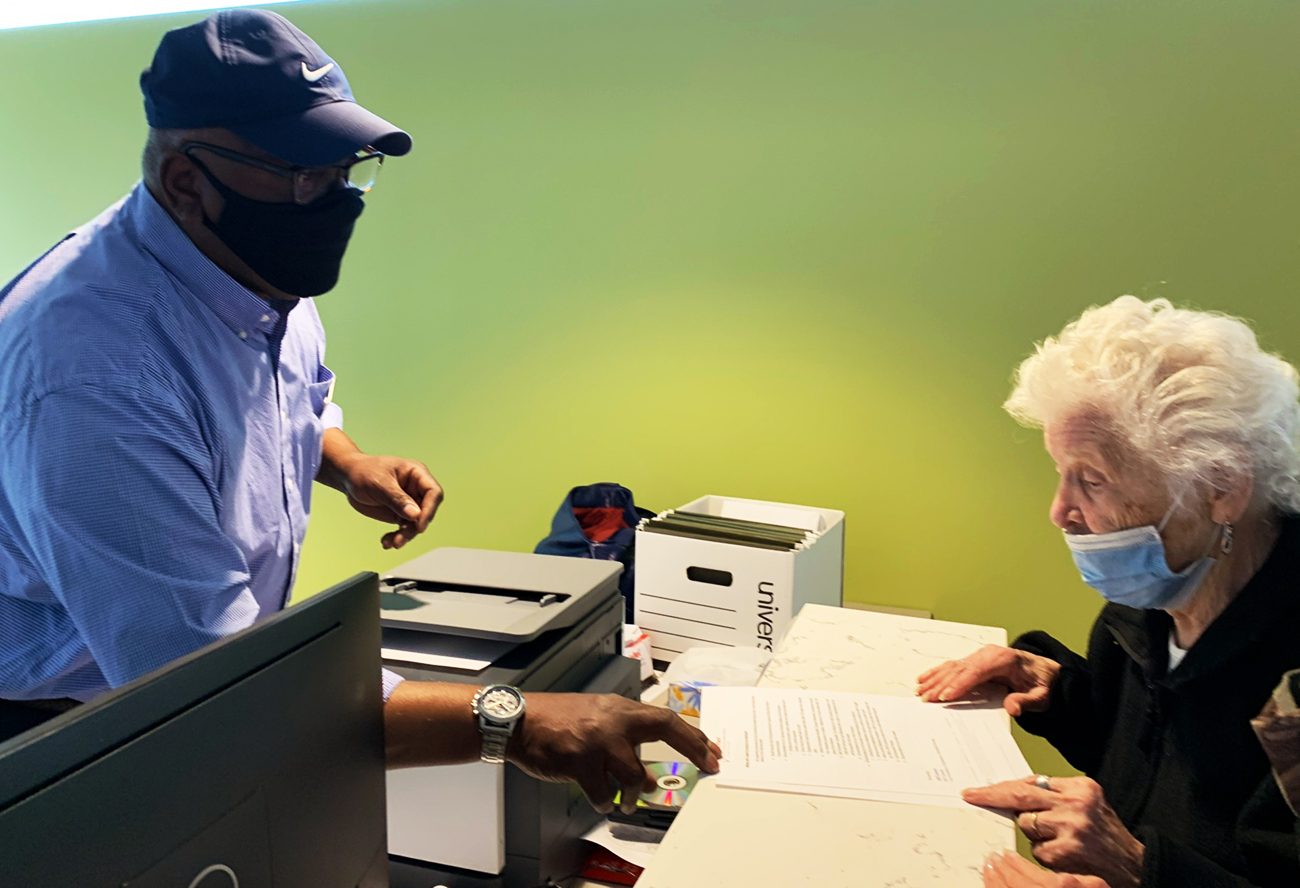Dozens lined up early this morning for one of the city’s hottest tickets: a spot at an archdiocesan senior housing complex with a built-in shrine to a beloved saint.
Catholic Housing and Community Services (CHCS) hosted an application session today for St. Rita Place, an affordable residence for independent, income-eligible older adults in South Philadelphia and the agency’s fifth facility in the region.
CHCS accepted the preliminary applications, which will be followed up by a more extensive screening process, at its St. John Neumann Place II (SJNP2) senior housing complex in the city’s West Passyunk section.
[hotblock]
With a groundbreaking blessed by Archbishop Nelson Pérez, and scheduled to open this fall, the St. Rita community of 46 one-bedroom apartments will include a lounge and outdoor terrace, Wi-Fi accessibility, exercise facilities and on-site social services.
Prospective residents must be 62 years of age or older at the time of application; have an income of $39,720 or less for a household of one, or an income of $45,360 or less for a household of two; and pass a background check, credit check, and a landlord reference check. Upon acceptance, tenants pay just 30% of their monthly income towards rent.
The St. Rita residence will join SJNP2 and four other existing senior living sites developed by CHCS, which offers a continuum of care to older adults throughout the archdiocesan area.
The new complex’s location at Broad and Ellsworth Streets, adjacent to the National Shrine of St. Rita of Cascia, will offer spiritual support and possible volunteer opportunities — as well as a chance for seniors to live in a desirable neighborhood increasingly out of reach for those with limited means, said CHS executive director Heather Huot.

Seniors wait in line May 24 at St. John Neumann Place II, an archdiocesan housing complex in South Philadelphia, to file applications for St. Rita Place, which Catholic Housing and Community Services will open in fall 2021 in response to soaring demand among older adults for affordable living. (Gina Christian)
“It’s really a remarkable feat, because that is prime real estate,” said Huot, adding that over the past three years her office has received 200 phone inquiries about St. Rita Place. “Buildings are going up all around there, many with luxury apartments, and we have managed to build affordable housing.”
Such residences are in high demand as the nation’s population rapidly ages. According to the U.S. Census Bureau, by 2034, seniors will outnumber children for the first time in the country’s history. In four decades, some 95 million U.S. residents, or 25% of the population, will be age 65 and older.
Despite that dramatic increase, there are still many misconceptions about affordable senior housing, said Huot.
“I think people assume the only ones who need it are those who are really poor,” she said. “But these are individuals who have worked their whole lives, and who do have pensions.”
Yet those funds simply aren’t able to keep pace with rising housing costs, Huot said.
“When you retire, your income is limited,” she said. “It’s never going to jump up. … And you’re trying to meet all your financial obligations.”
At the same time, seniors can find themselves struggling with a number of “potential difficulties” presented by their homes, said Huot.

Eliud Chico (left) and her daughter Laura were on hand during a May 24 application session in South Philadelphia for St. Rita Place, an archdiocesan senior housing complex that will open in fall 2021 next to the National Shrine of St. Rita of Cascia in the city’s downtown section. (Gina Christian)
“We know that Philadelphia housing is at least two or three stories, with the laundry room in the basement, the bedroom upstairs, and many without a bathroom on the first floor,” she said.
Those are exactly the challenges that prompted 92-year-old Frances Fox to grab a lawn chair and take her spot in the application line at 7:30 a.m. this morning.
“I’m afraid to live by myself,” she said. “That’s why I want somebody there, so that I could just open the door and say ‘hello.’”
Fox, a member of Our Lady of Mount Carmel Parish in South Philadelphia, was pleased that “the church will be right there” at St. Rita Place, “with (other) people walking to it.”
Ease of access to Mass was a draw for applicant Eliud Chico, who joined her daughter Laura (an employee with archdiocesan Nutritional Development Services) at today’s sign-ups.
“It’s important to be near the church because I am Catholic,” said Chico, speaking in Spanish. “I have a lot of faith in St. Rita.”
[hotblock]
Laura Chico described the new complex as “the perfect place” whose smaller and more manageable size complemented her mother’s current lifestyle.
CHCS senior residences, which often repurpose vacated parish schools and convents, are also a better fit for a downsized church, said Immaculate Heart of Mary Sister Catherine Glackin, who filed an application for homebound clients from her pastoral ministry at Holy Innocents Parish in Philadelphia.
Sister Catherine said she was “thrilled” when CHCS converted her grade school, the former Nativity B.V.M. School in the city’s Port Richmond section, into senior housing.
“Every time I drive by it, my heart leaps for joy,” she said. “These (seniors) are the backbone of the church. They built these churches, so to use these properties in this respect is just wonderful.”
The residences are a win for the surrounding neighborhoods as well. Funded through a blend of tax credits, community development grants and monies from federal home loan banks and local lenders, the CHCS senior residences help boost area home equity through an infusion of investment.
For Huot and her team, the complexes are ultimately a place for seniors to call home.
“When you walk in our buildings, you know that you have value and are worth a beautiful, safe place to live,” said Huot.
And given the demand for such residences, she said, the task at hand is to expand her agency’s nationally acclaimed model.
“We’re in the middle of a pandemic, and all of these people are coming out to apply for one building,” she said. “Think about how many buildings we could probably fill by the end of today.”
PREVIOUS: Come home to Mass in person, archbishop implores Catholics
NEXT: Staff ‘hungry to do more’ after months of food giveaways




Share this story